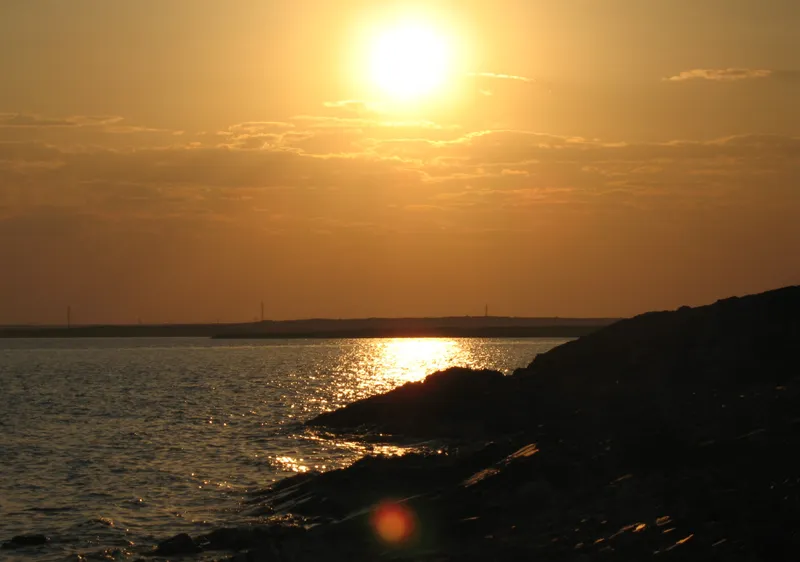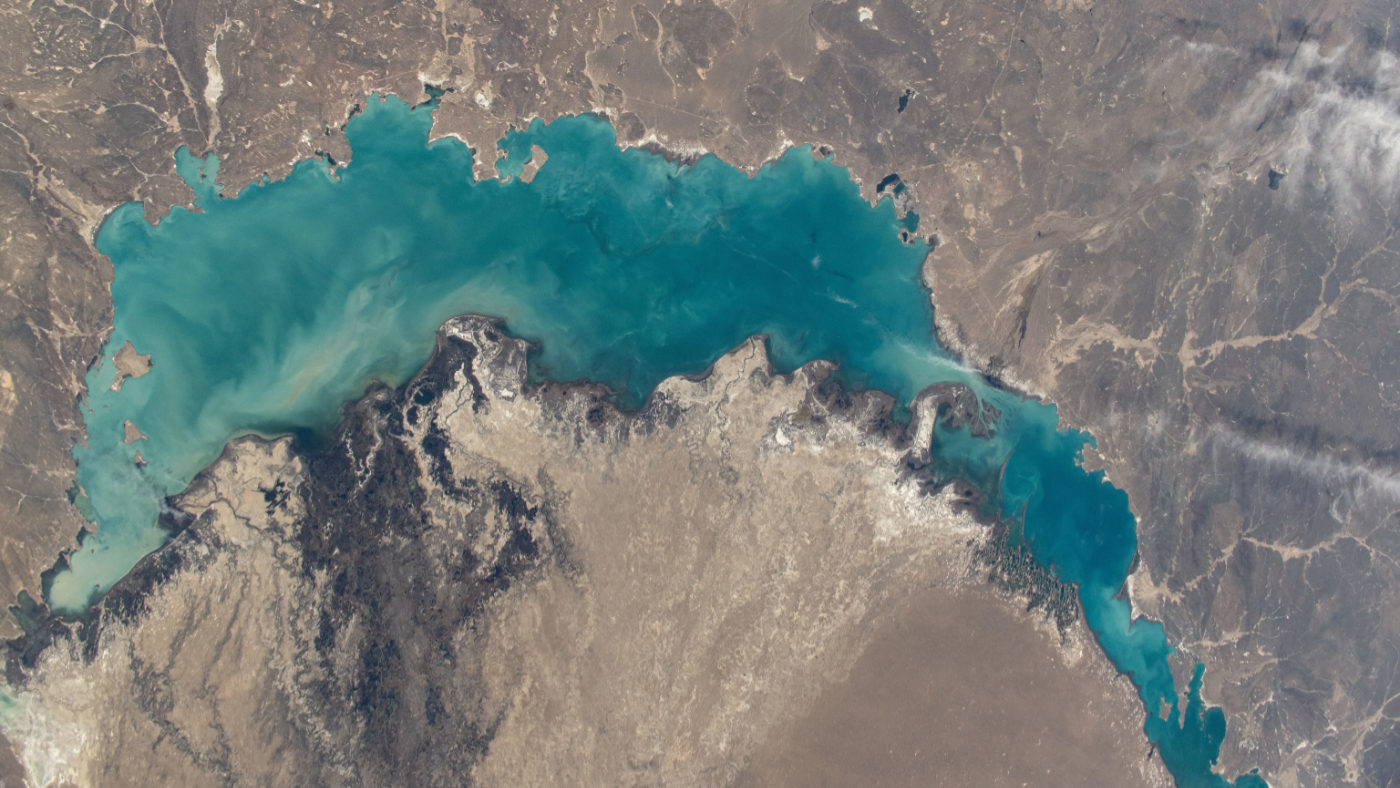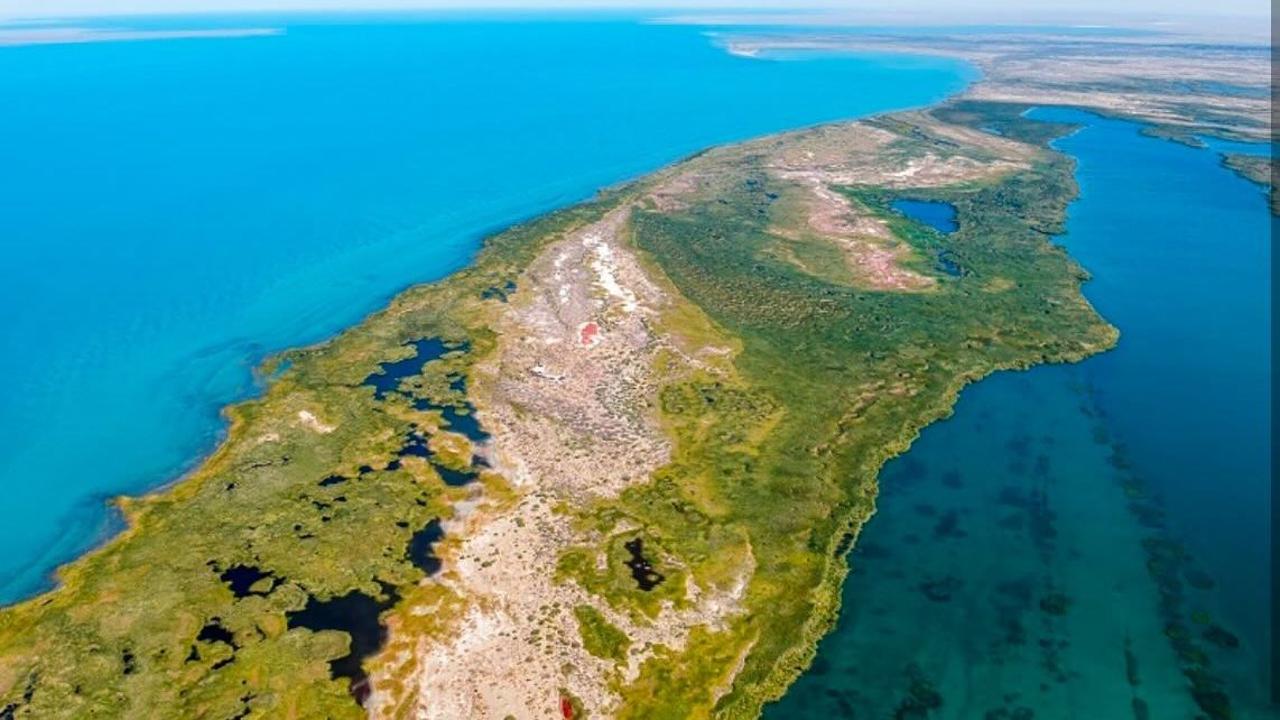In the heart of Eurasia, surrounded by Kazakh steppes and sandy plains, lies Lake Balkhash—one of the largest lakes in Asia and the fourteenth largest in the world. But it’s not the numbers that define its uniqueness. Balkhash is a one-of-a-kind lake divided into two distinct water worlds: the western part is fresh, while the eastern part is saline. This rare natural phenomenon shapes not only its ecosystem, but also the way people live and travel in the region.
Nature as a Phenomenon
Lake Balkhash is more than just a body of water—it is an entire landscape. The surrounding area features semi-deserts, rock formations, dunes, and wide-open valleys. One of the most striking natural landmarks nearby is the Bektau-Ata mountain range, located just 70 kilometers north of the lake. This ancient volcanic terrain resembles something out of a sci-fi movie, with sculpted rocks, stone arches, and hidden springs.
Along the rivers feeding into Balkhash—such as the Ili and the Karatal—you’ll find riparian forests (known locally as tugai), which serve as habitats for rare birds and wildlife. For birdwatchers and nature photographers, this is a hidden gem within Central Asia.
Balkhash as a Travel Destination

For travelers looking for something beyond typical tourist routes, Balkhash offers a multi-layered experience—from serene beach holidays to immersive eco-tourism. During the summer season (late May to September), the lake warms up enough for swimming, and its sandy and pebbled shores attract both locals and visitors.
Fishing is a major draw here. The lake is home to species like carp, zander, catfish, and bream. Anglers fish from the shore or by boat. In calmer coves, water sports like windsurfing, kayaking, and even diving are available.
Culturally, Balkhash and the nearby town of Priozersk preserve Soviet-era architecture and planning, contrasting sharply with the wild natural backdrop. This juxtaposition adds unexpected depth to the traveler’s experience. Tasaral Island, located off the northwestern shore, offers complete seclusion—there’s no infrastructure, but the raw landscape and silence are reward enough.
Ecology and Vulnerability
Lake Balkhash is ecologically fragile. In recent decades, water levels have been slowly decreasing, in part due to upstream water use from the Ili River in China. Industrial pollution and the lack of protected status only compound the issue.
A proposed nature reserve project, Ile-Balkhash, aims to safeguard the region’s biodiversity and limit environmental impact. It also envisions the reintroduction of the extinct Turan tiger, once native to the Ili and Syr Darya river deltas.
Balkhash Is More Than Geography

Traveling to Balkhash isn’t about ticking boxes or seeing famous landmarks—it’s about sensing space, silence, and scale. The wind, the water, the vastness: all of it invites you to slow down and simply observe. Balkhash doesn’t cater to comfort-seekers. It speaks to those looking for something real. It is Kazakhstan at its most unfiltered—complex, layered, and unforgettable.


0 Comment